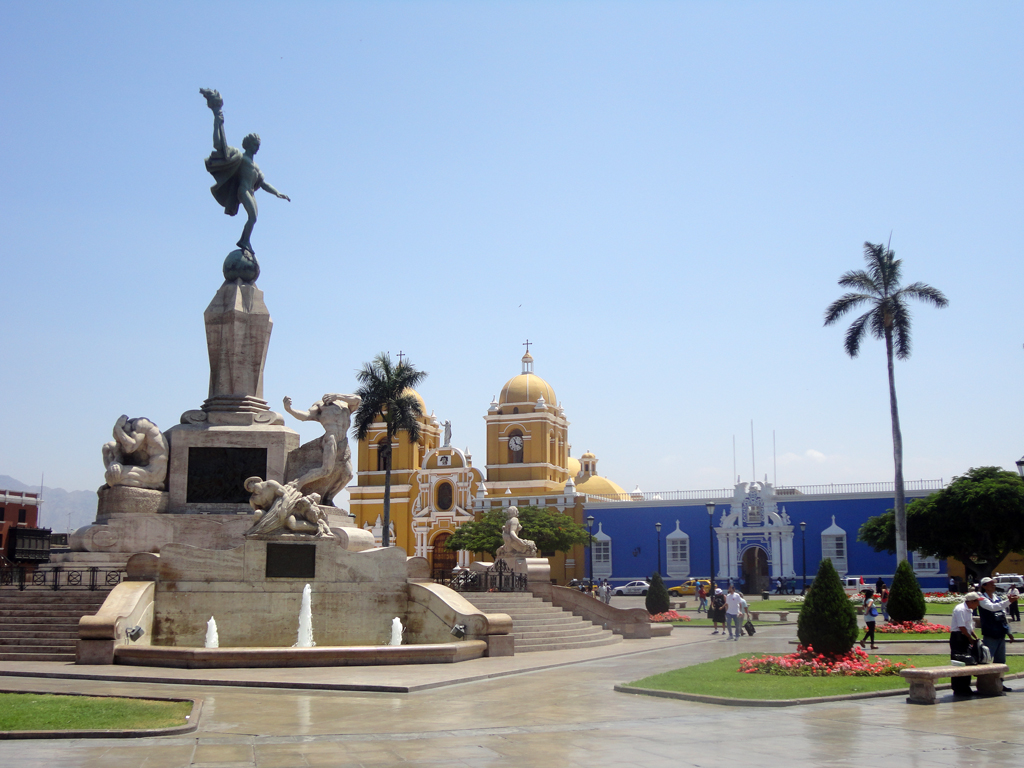
Ah Trujillo, it’s a large city where every building in the central area is painted in
colourful pastels of red, yellow, brown and blue. Like every city I’ve been through so far in Peru, there’s also an army of council works cleaning the streets every hour or so. If you don’t notice these tireless workers in blue you’d be forgiven in thinking no one litters in any Peruvian city. And if you’ve travelled on any bus in Peru, this would go counter to what you see where everyone litters everywhere! The same can also be said of Ecuador, however the only city in Ecuador where there were around the clock crews working to clean the streets was Cuenca.
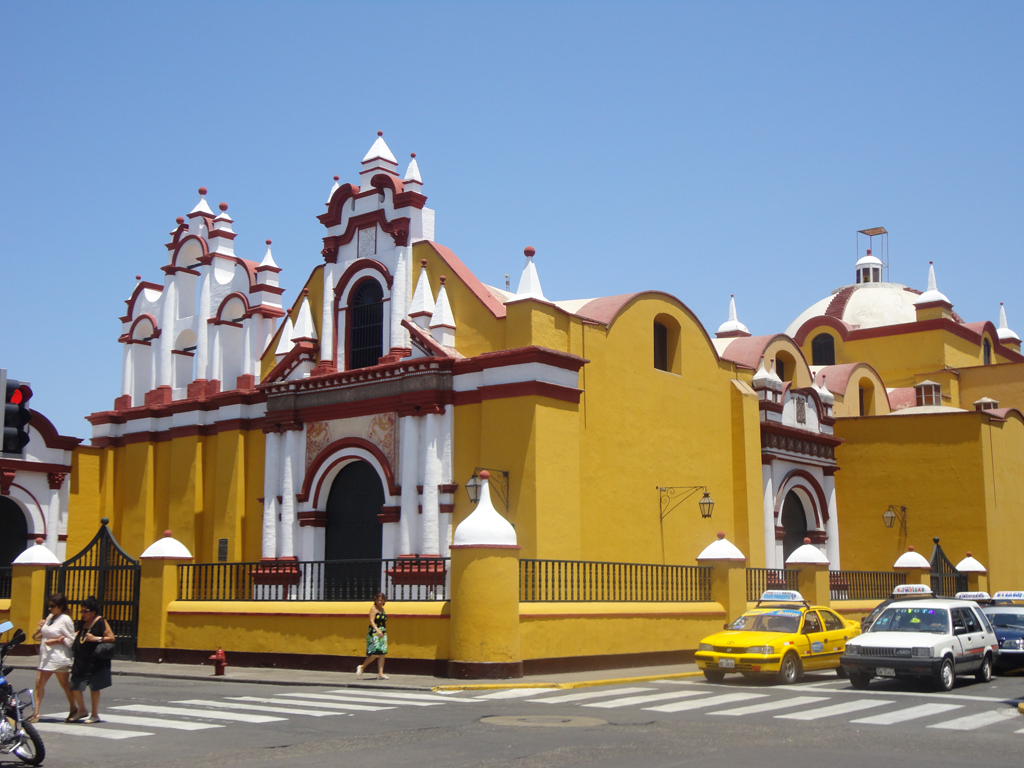
It was a pleasure returning to the coast, where the Andean mountains shrink and turn into hills, and the lush green vegetation gives way to rocky desert and gravel
sand. For most the pleasure would be visiting the other way around, but I just love the desert and the Peruvian desert doesn’t disappoint. There’s something
just beautiful and desolate in overlooking a heat drench land dry and devoid of water. Of course the ancient inhabitants knew water was a slightly important
necessity for survival, building great aqueducts that stretch for kilometres from the Moche river, and it was this reliance on water that would bring defeat to the Chimu people at the hands of the Inca at their capital of Chan Chan.
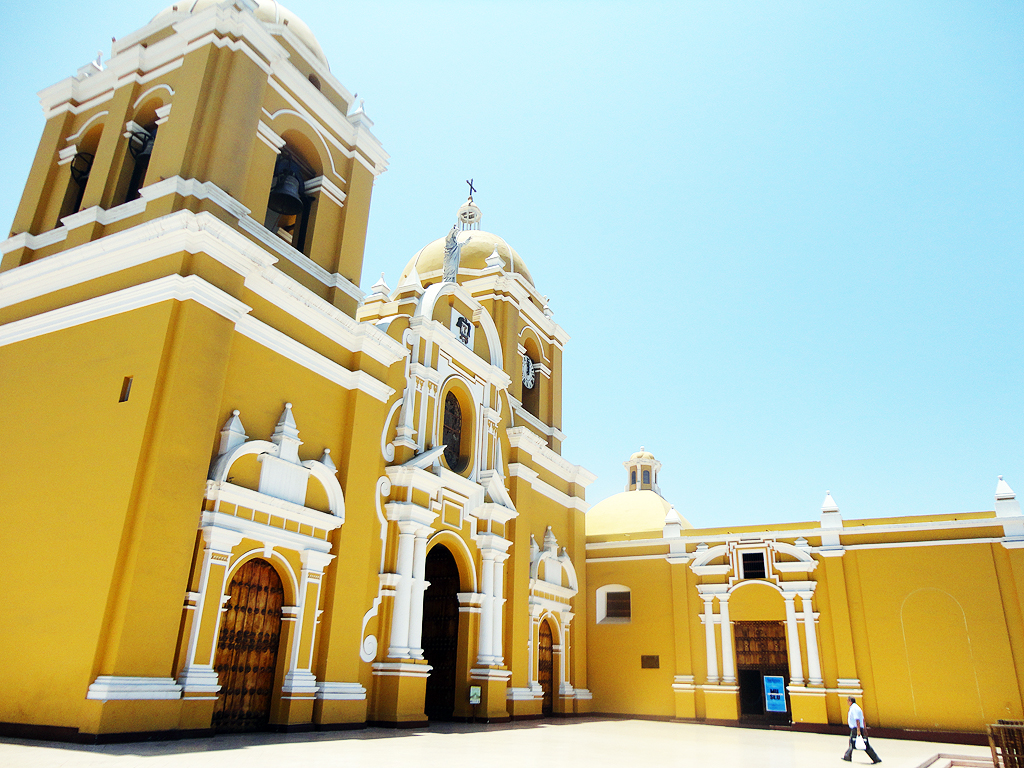
It’s pretty hard not to stop and stand gazing around at Trujillos Plaza de Armas when you first arrive. A huge fountain monument sits at its centre, surrounded by
flowery gardens and chairs to sit and watch the official photographers try and earn a few soles by taking pics of tourists. And what was fast becoming a natural addition to any Plaza de Armas, a man with a megaphone protesting something. The largest eye catching building off the plaza is the cathedral across the road. While the architecture itself isn’t anything special or even note worthy, its pastel yellow paint job with trimmed white is stunning.
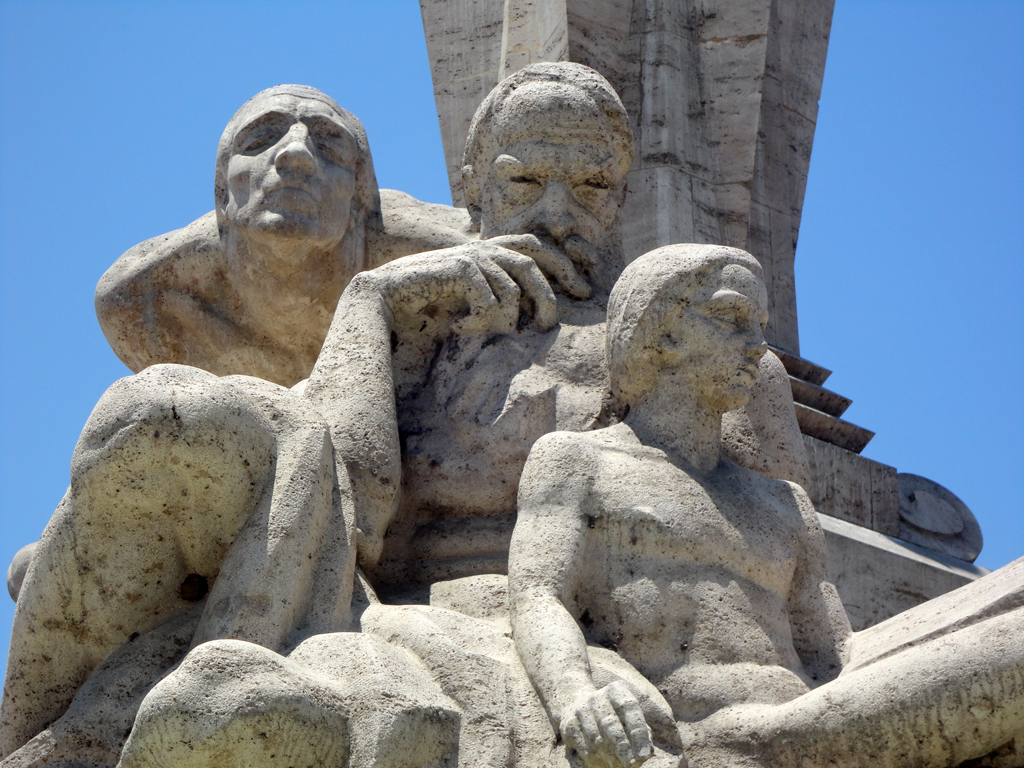
There really isn’t that much to see in Trujillo itself. I visited two museums, the
archaeological and the utterly bizarre zoological. This is definitely my first visiting a taxidermy museum, and it was only a couple of rooms in size that might as well have been the backroom of somebodies home. Inside it housed a variety of stuffed animals, fish and crustaceans. They weren’t even that well done, it was like walking into a 15 year olds collection of dead animals he’d killed and stuffed with cotton wool, replacing their eyes with lifeless and horrifying marbles. Everyone should visit this museum, just to experience the profound bafflement of what you are witnessing.
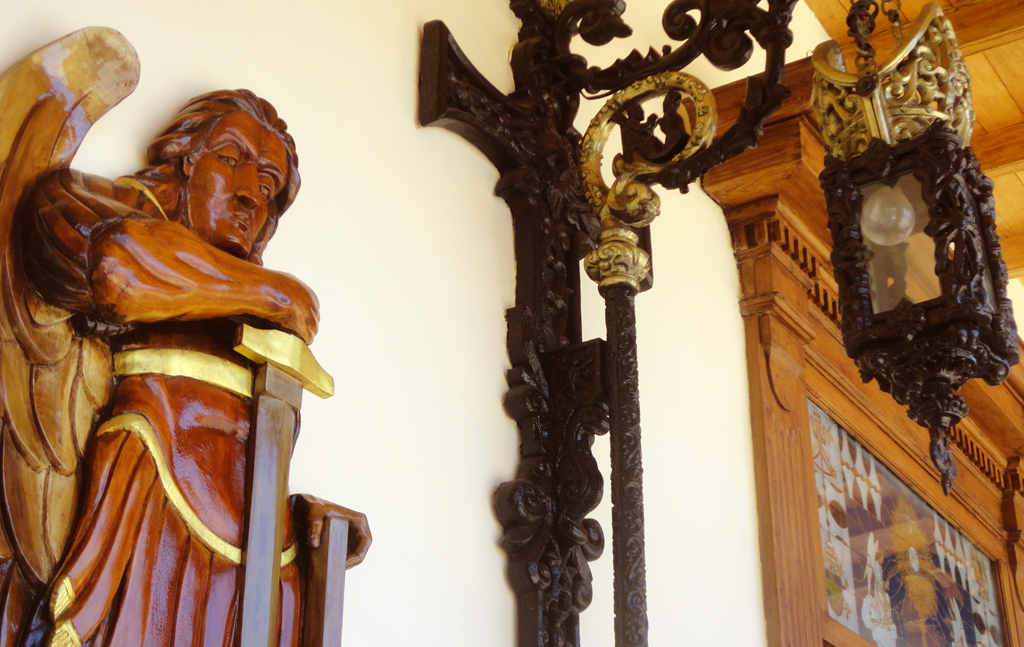
Peruvians in general are pretty friendly people, and will strike up a chat while you’re sitting in a park. Many of them are eager to try out their English, so it
wasn’t anything unusual when a native of Lima visiting Trujillo, a guy named Fabio, struck up a conversation. The conversation turned to talking about pisco
sour, a cocktail drink well known here, and which I hadn’t tried yet. So off we went to taste test some of this drink, which unfortunately the shop had run out of. Instead we opted for a bottle of locally made rum and chilled out in the nearby park, talking shit until the sun and the bottles contents had all but vanished. So next off we then continued to a bar somewhere outside town and that’s when things got a little hazy…
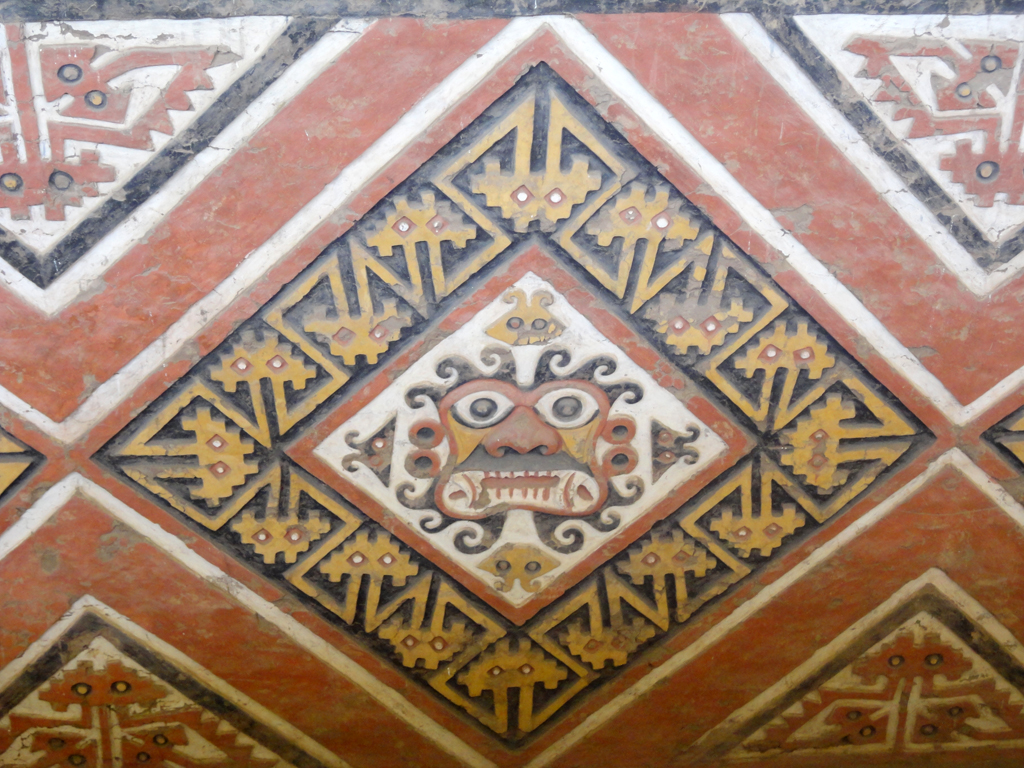
The next morning I opened by wallet to find all my 50 sole notes replaced with 100s. Odd, I thought, remembering him asking if I could break a 100 sole note for
him, but not 4 of them. Hung over and my brain still trying to recall what exactly happened the night before, I went out to a restaurant for some lunch, paying with one of the 100 soles notes. The waiter came back – nope the note was a fake. I already knew where this was going when I handed him the second note and he shook his head – falso. Taking the remaining two 100 sole notes out I gave them to him and asked if they were fake too. Sure enough, all of them were fake. Sighing I paid on my credit card, swearing under my breath at my foolishness, and headed to the nearby ATM to get some real money out. And not thinking straight, I walked away from the ATM with the cash… but without my bank card.
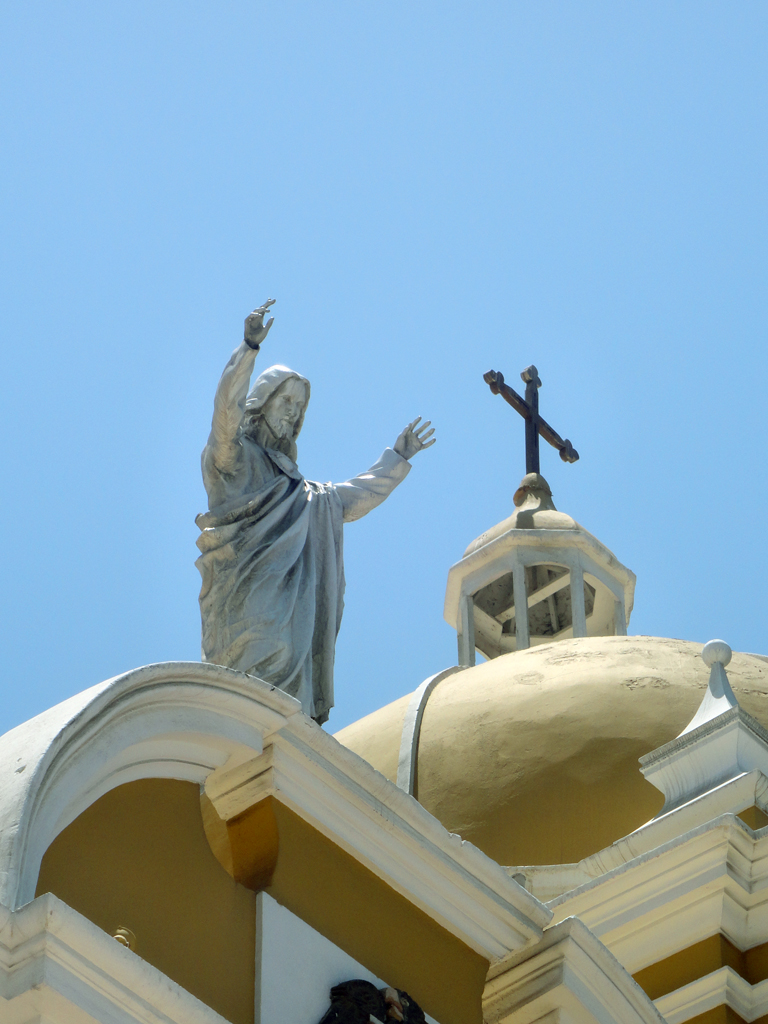
The next morning I frantically arrived to the bank where the ATM was. In broken Spanish I explained to the bank manager I think I had left my card in the machine. With the help of one of the tellers who spoke a little English, they figured out
what I was saying and requested authorisation to open the ATM. After about an hour of sitting in the bank waiting, accepting my fate that the card was gone
and I would have to wait for a new one to be sent out from Australia, she returned and as soon as I saw the flash of red plastic I couldn’t help myself
but cheer and clap and thank her. Such is the feeling of relief! As I walked away with a giant grin, the other people waiting in the bank just watch the strange gringo leave with a skip in his step.
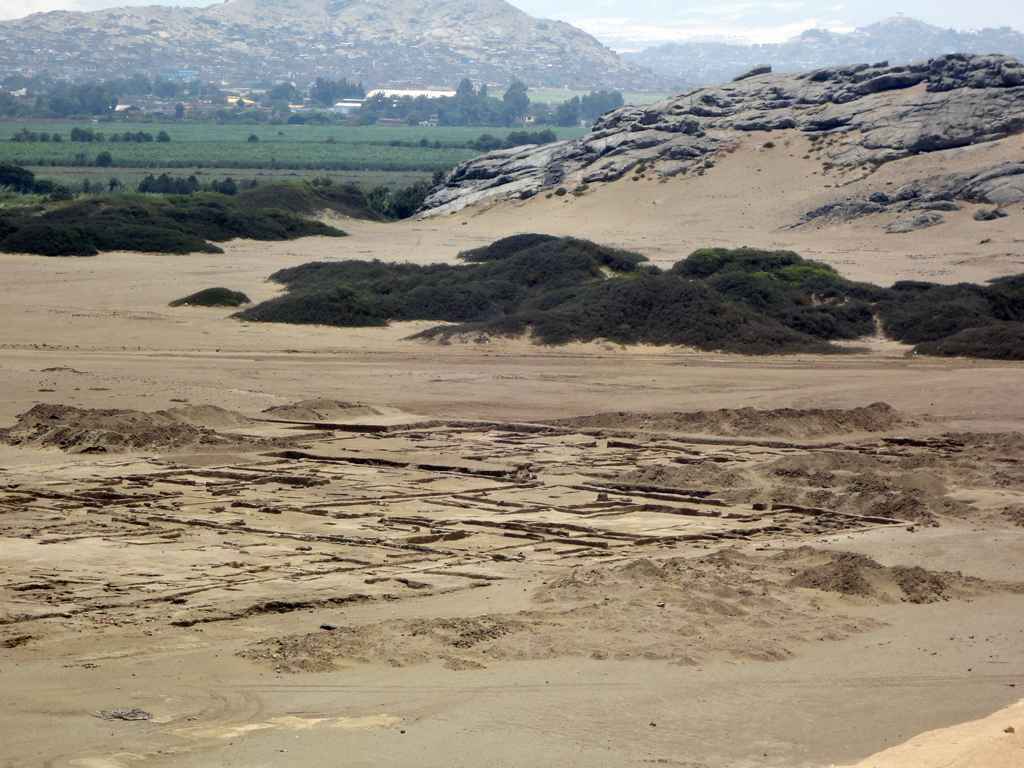
Outside of Trujillo is the famous city of Chan Chan, the Chimu capital dating back to the 9th century and a UNESCO heritage site. It’s estimated that
approximately 60,000 people lived here at its height of power, and it holds the title of the largest pre-Columbian city in the Americas and also the largest adobe
built city in the world, covering an astounding 36 square kilometres. I was originally going to just catch a minibus out to the site, but every bus that
went by was completely packed as they all made their way onto the beachside town of Huanchaco. Giving up I decided that a 25 soles tour was pretty good value to visit Chan Chan, the Huaca del Sol y Luna, and the Huaca Arco Iris.
First stop we headed out to Huaca del Sol y de la Luna – the Temples of the Sun and the Moon. The Temple of the Moon is the only one to be properly excavated, while the Temple of the Sun sits nearby looking more like a small mountain in the
desert, with some visible brick walls, than a large temple used for ceremony and worship. The Temple of the Sun is the larger of the two, built by the Moche people with an estimated 130 million adobe bricks used in its construction,
making it the largest adobe structure in all the Americas. Overlooking the area is the mountain of Cerro Blanco, not a huge mountain by any standards but it was worshiped as a god and the god is represented in many of the Moche ceramics and friezes at the Temple of the Moon.
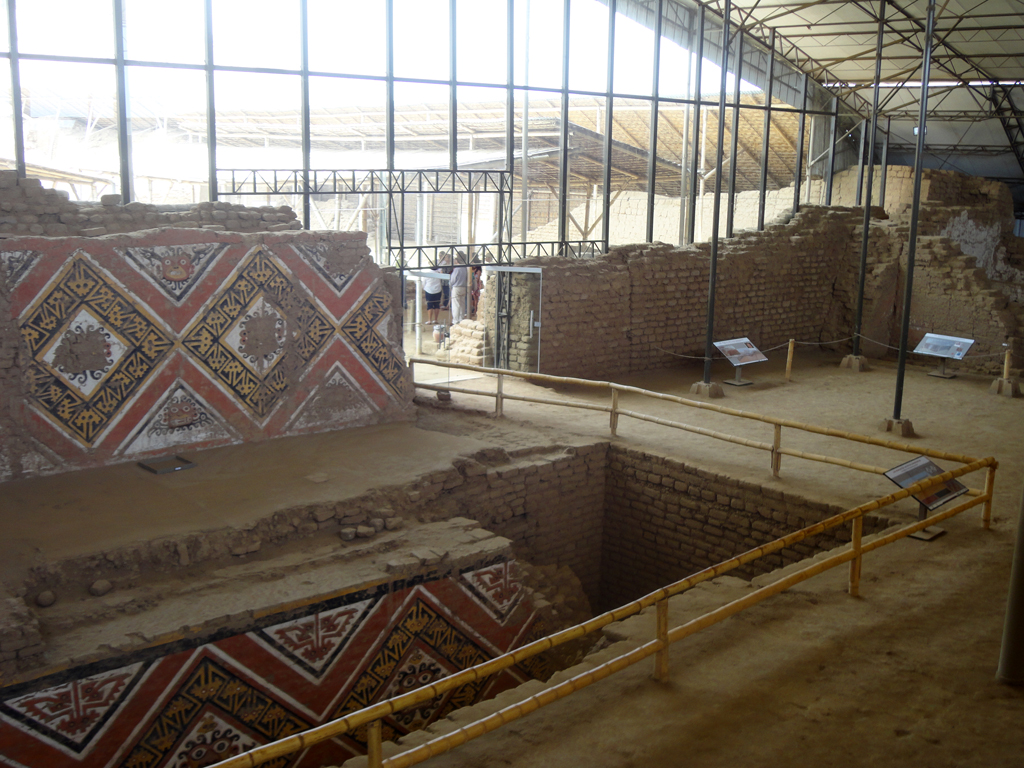
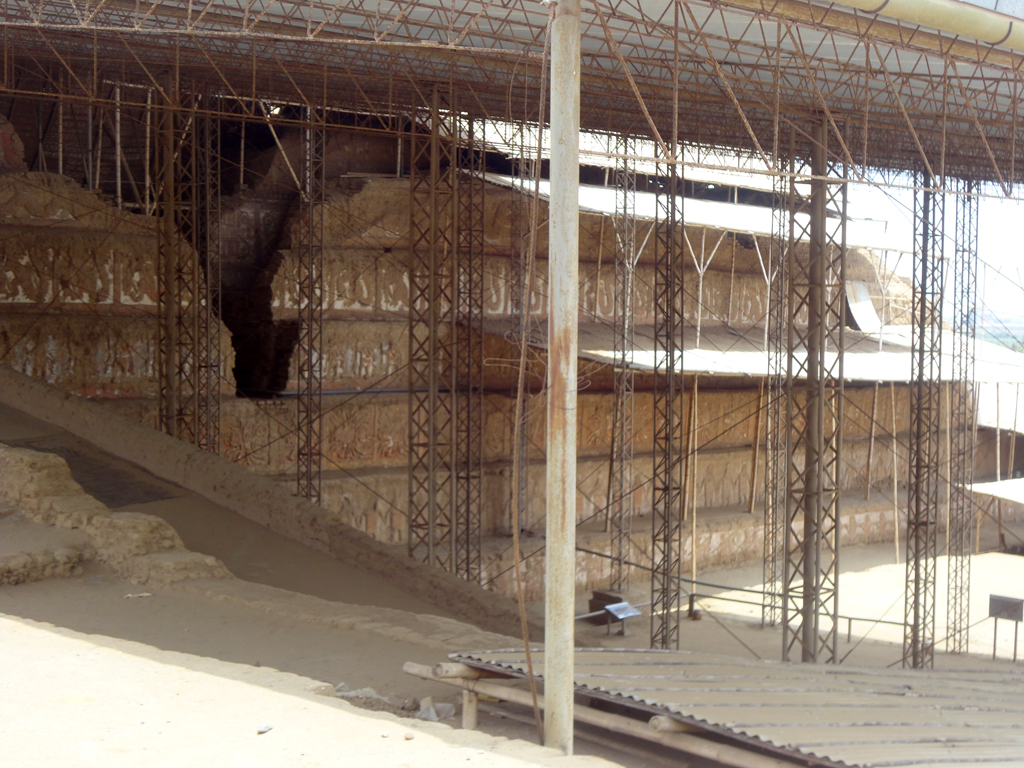
In a theme that carries across all places of worship throughout the world, the temples were built over several times by each generation. Each time the temples would be larger, higher and grander than their predecessors. This would be the first time I’ve see such an act of one-up-manship actually perfectly preserve the underlying temples, and as archaeologists peel away each layer they reveal amazingly colourful stone work depicting the mountain god.
The entrance to the temple is something to behold. Reliefs showing warriors, the elite, slaves and animals adorn the walls with their original colours still mostly intact. Standing out is an amazing 1500 year old mural that looks to be showing the life of the Moche, or maybe it’s their cosmos, the guide was speaking in Spanish so I didn’t quite hear if anyone knew exactly what it was representing. Even though, I stood there looking at the mural and wondered who exactly made it and whether they’d think in their wildest imagination that someone from the other side of the world would be admiring it.
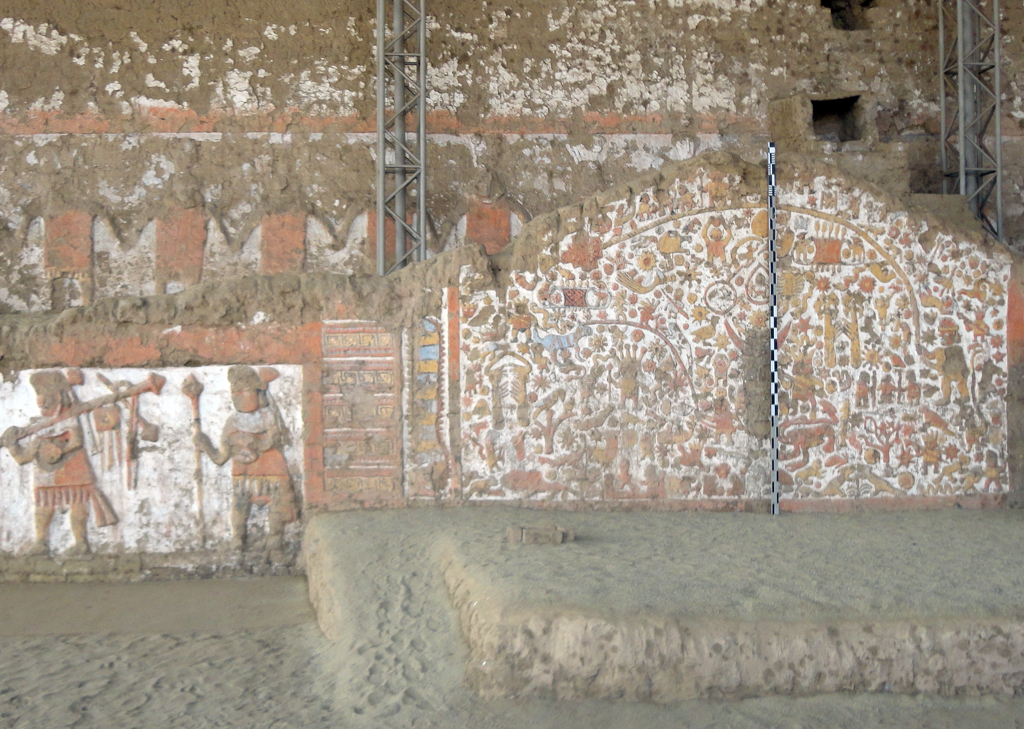
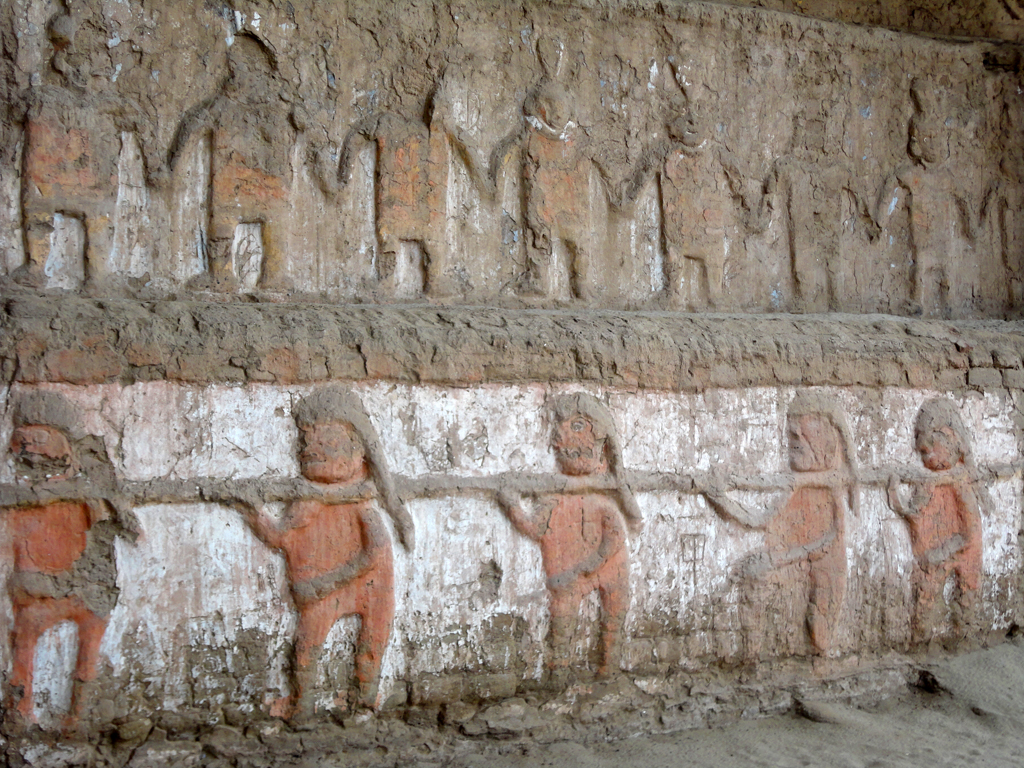
One other thing to admire at each of these sites was the strangest dog you’d ever come across. The Peruvian hairless dog is just hard to believe it exists! They’re
black in colour (well all the ones I’ve seen so far) and completely hairless except for a tuff of hair on their head. For a dog that looks sheer demonic they are the mostly incredibly friendly dogs. I suppose when something looks so evil and unnatural they need to be friendly! Their body temperature it also higher than other dogs, and people, and lava, so stroking their hairless superheated skins is very weird. I need to get a photo of one of them, but the ones at the archaeological sites wouldn’t stay still, they were too busy greeting everyone!
Stopping for lunch I couldn’t help but see chupe de pescado was on the menu and I had to order it. Not bad, still not as good as in Chachapoyas. With us on the tour was a Peruvian that was now living in the USA. He was visiting with his mother (who was from Lima) and he had grown up in Trujillo as a child. They both wanted to see how much Trujillo had changed, and it was interesting to hear him talk about how much Peru itself had changed in the past few decades since he’d moved to the USA. Food was the biggest, well aside from no more Shining Path, and he recalled how bad for you the food used to be, particularly being heavy in salt. But now with each visit back home he’s happy to see how good the food has become, and how healthier it has become.
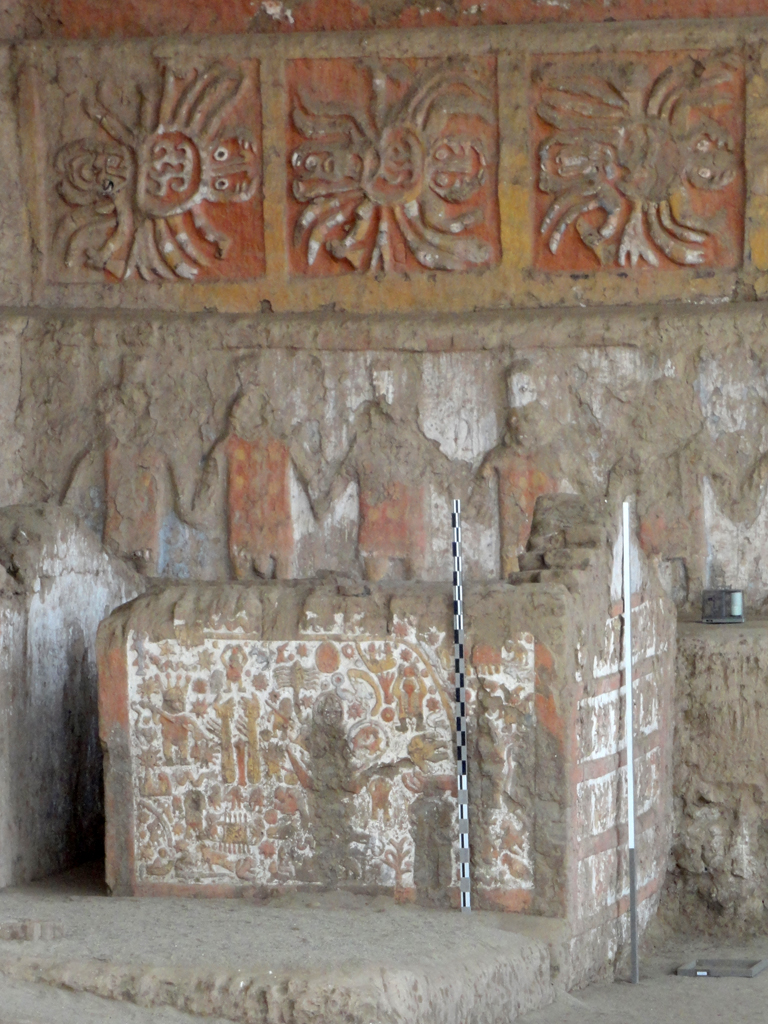
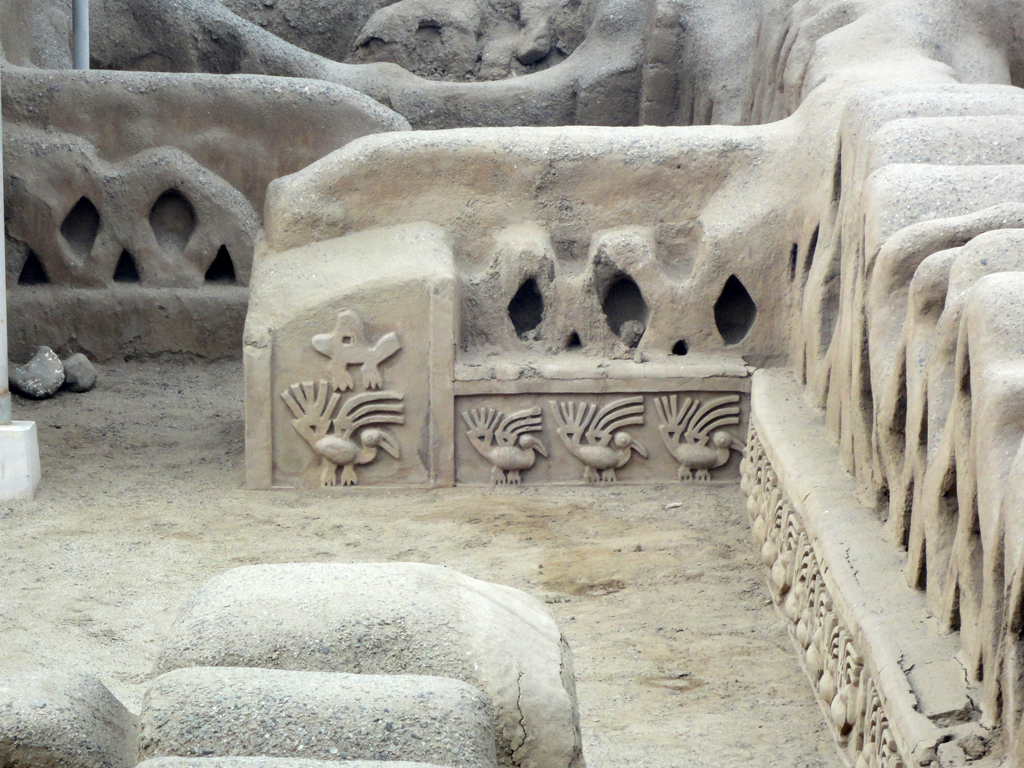
The giant metropolis of Chan Chan is nothing to scoff at. I’m glad now I didn’t catch a minibus out here, as it’s a good couple of kilometres from the entrance to
where the main excavated citadel compound is. The rest of Chan Chan isn’t much to look at, until you see an aerial photograph of the site and that’s when
you’re jaw drops at the sheer size and scope of the city. After being greeted by another friendly hairless dog, we entered the Tschudi Complex and took in the size of the courtyard where ceremonies would have taken place. In a similar construction to the sites I’ve seen in Central America, the walls are designed to create an effective echo. A single handclap can not only be heard throughout the courtyard, but it is also greatly amplified in sound. This allowed for speakers to be heard easily, and the sound of applause to be thunderous.
Behind the main courtyard is the lords area, where the elite would gather. The walls, what’s left of them, have amazing lattice designs with bases depicting birds
and what looked like space invaders from an Atari. A small model displays what the area would have looked like, and even by todays standards it would have been amazing to behold.
Further on into the complex we come across something I wasn’t quite expecting. In the desert, in the middle of a sprawling city, were ducks. They were sitting a
large pond (almost a lake, really) in the ruins of the complex surrounded by completely out of place green grass and a forest of reeds poking out from the
water. This complex is considered a later addition to the city, so it’s not believed the oasis existed beforehand but the Chimu made it themselves as part of the citadel. It certainly would have been an awe-inspiring sight to see for locals or visiting elite, as it certainly was for this gringo 1100 years later!
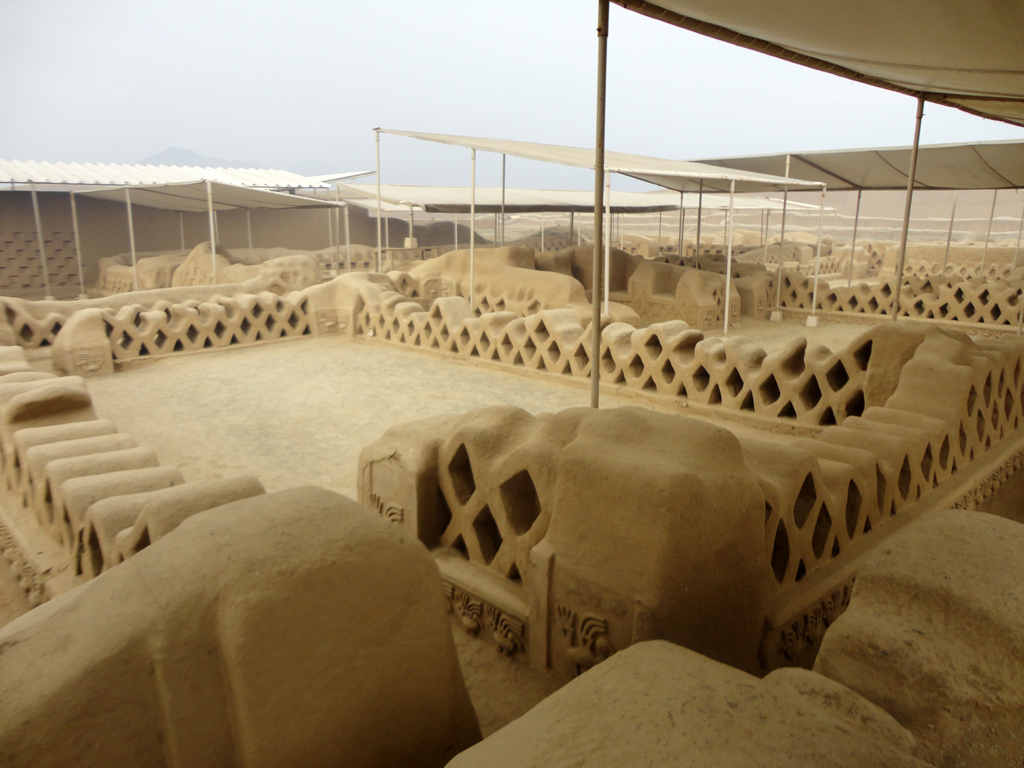
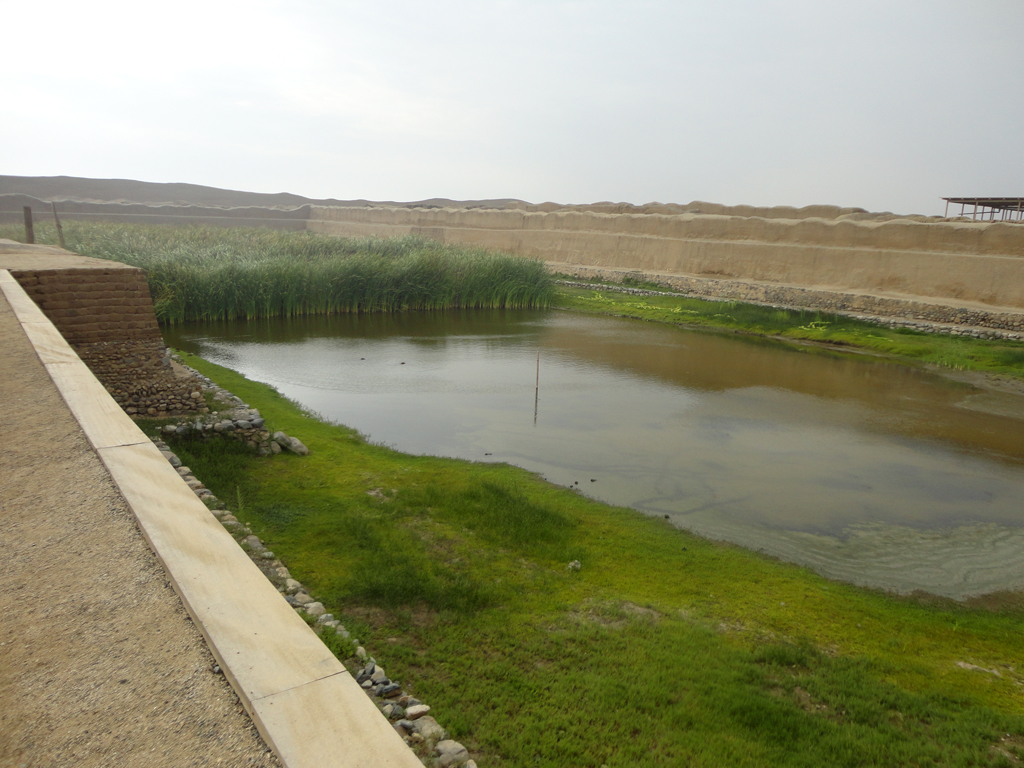
The Chimu empire was not destined to last. As the Incan empire conquered it’s way north from their homeland in Cuzco, the Chimu and Inca finally clashed. The Incan emperor sent his son to conquer the Chimu, a feat that was thought to have been an easy conquest, but proved instead to be extremely difficult. The high fortified walls of Chan Chan protected the Chimu from Incan invasion, and it
was not until the Inca prince returned home for reinforcements that a plan was devised. The world, ancient and modern, is familiar of siege warfare and the
first strategy of a siege is to cut off the cities supplies. When the Incan prince returned to the siege at Chan Chan he ordered his men to cut the city off from the aqueducts flowing from the Moche river, stopping the water supply. In the baking heat of the desert with no water, the Chimu surrendered to Incan dominance. The siege and victory over Chan Chan took 4 years, ending the 600
year rule of the Chimu.
The tour ended with a visit to Huanchaco, the nearby beach side town that is overrun by surfers and tourists. I wanted to visit this town to check it out, but really didn’t have any intension to want to stay. It certainly is interesting to see
what happens when desert meets the Pacific ocean, and Huanchaco certainly isn’t a beachside paradise. It did however have a charm to it and I briefly thought
about staying here for a few days, a thought quickly dismissed with the desire to head back into the Andeas to the city of Huaraz and the ruins of Chavin.
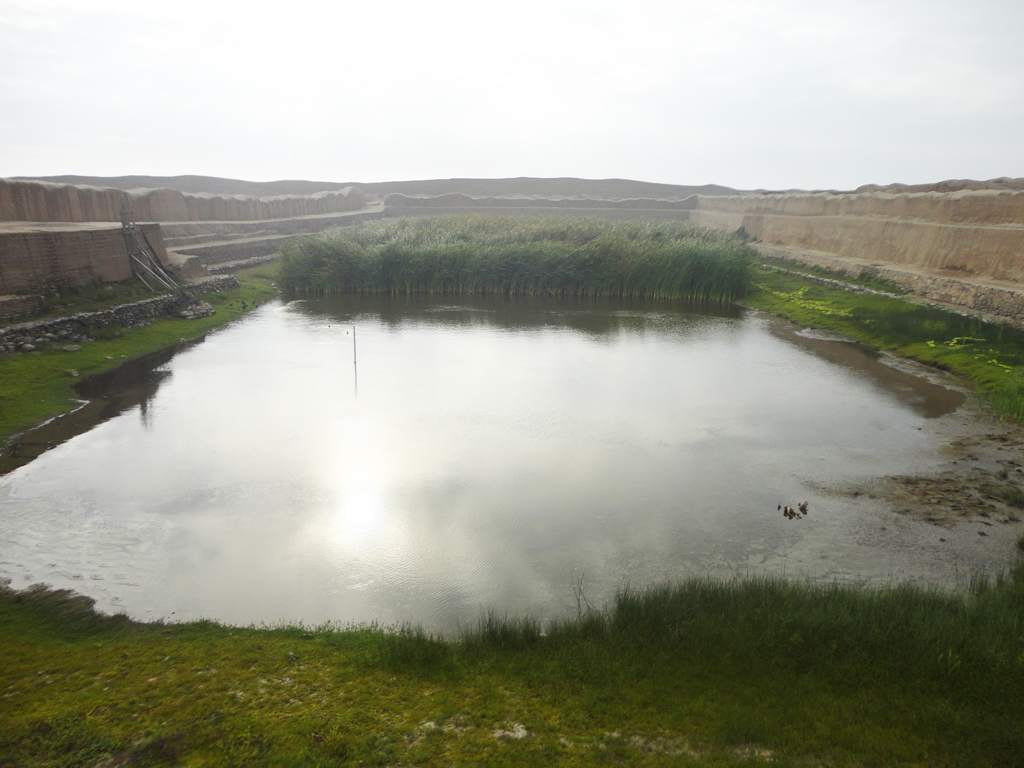
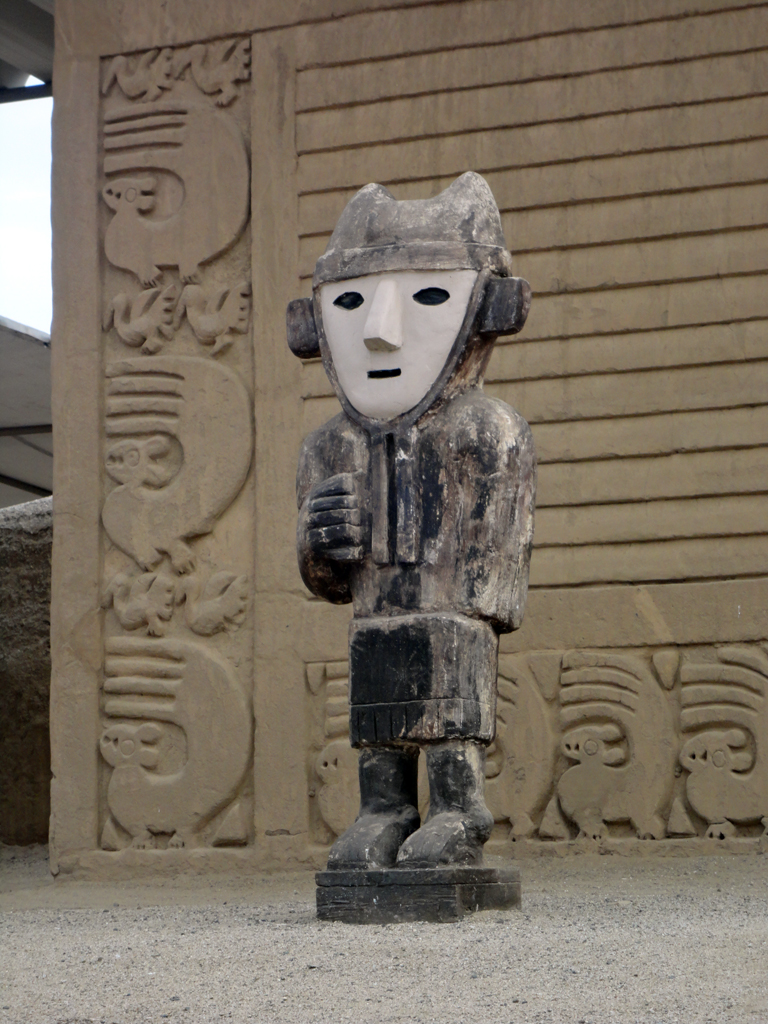
Fate, it would seem, had different plans. Going into the bus ticket office to book my ticket to Huaraz, the bus that night was completely filled. It was the first
time I’d ever come across this, and I found it odd a daily bus to Huaraz of all places would be filled up already. Asking about booking for the next day, the
ticket lady shook her head, there wasn’t a bus tomorrow. I wandered out of the ticket office and wondered if I should just head to Lima instead or find
another bus company. Sitting in the park a local came over and started chatting, so I asked about other buses to Huaraz. He started telling me of another company, then stopped as he remembered something – there were no buses to Huaraz. Protesters had blocked the road and there was no way to get there other than going back to Cajamarca first.
Searching online I came across what the fuss was about. A new law had been passed that made illegal mining punishable by a lengthy jail term. The miners that were now deemed illegal had taken to protest across Peru, and today they blocked the Panamerican highway in the city of Casma. The Panamerican is the artery road that links everything, and Casma was where it leads to Huaraz and Lima when travelling south from Trujillo. I wasn’t going anywhere I had planned.
So instead I’m now planning on heading to Huanchaco after all. If I have to wait out a protest I might as well do it by the ocean!
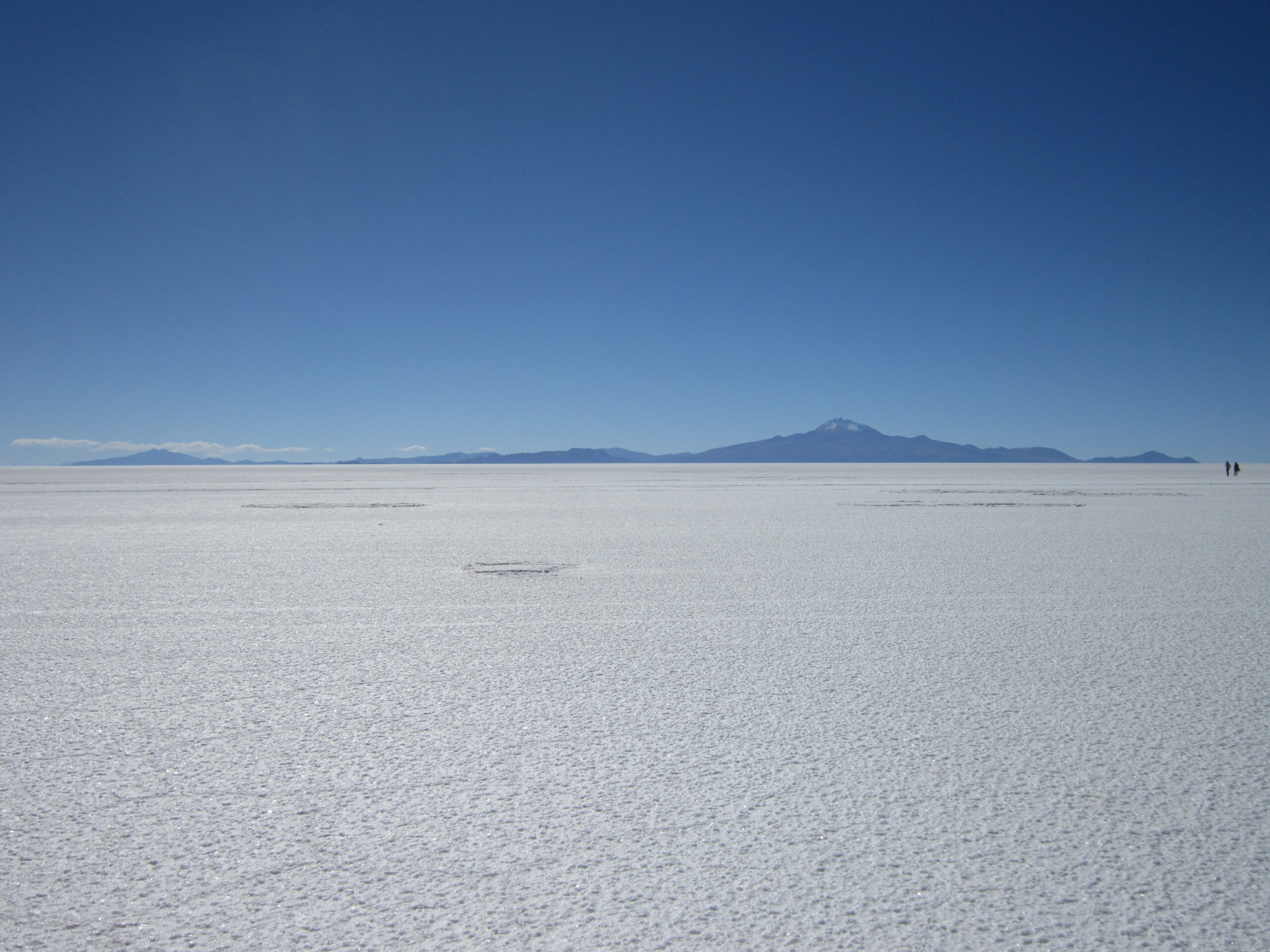

One response to “Trujillo – Colourful, Ancient Ruins and some Fake Money”
Go and put your feet up for a day or two, and if you see that tosser who did the money switch on you then take a page out of the beach mugging episode in Ecuador.